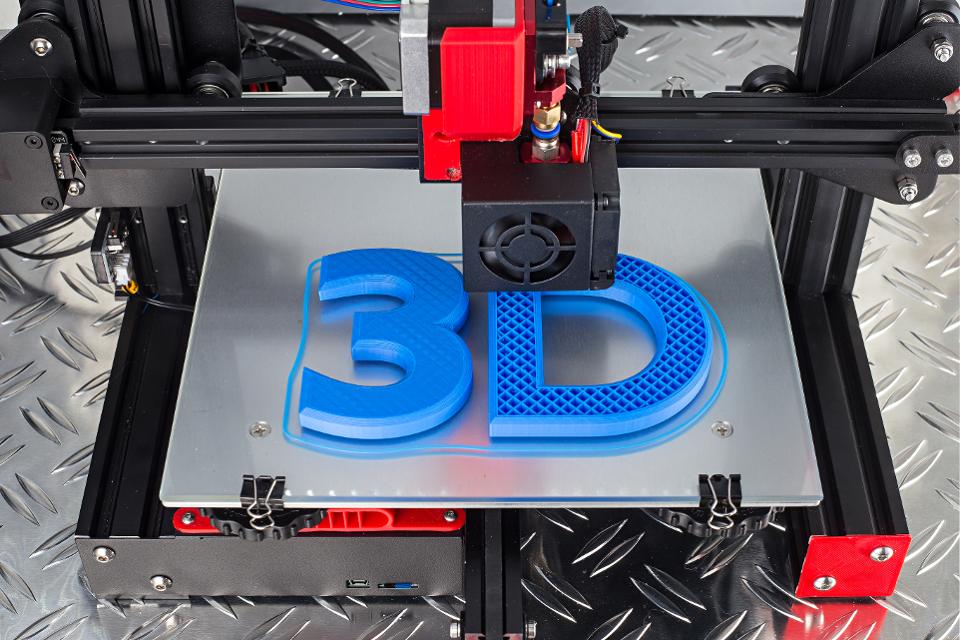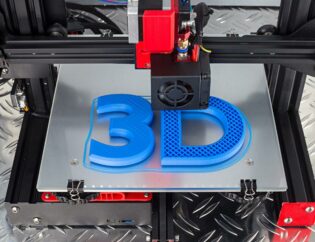
3D printing has accelerated manufacturing, enabling the creation of complex geometries and customized products with relative ease. However, like any technology, it comes with its own set of challenges. Among the most common and frustrating issues faced by 3D printing enthusiasts and professionals alike are zits and blobs. These defects can mar the surface of printed objects, compromising both aesthetics and functionality. This blog delves into the specifics of zits and blobs in 3D printing services, exploring what they are, why they occur, how they affect prints, and the technical strategies to minimize and resolve these issues.
Understanding Zits and Blobs in 3D Printing
What Are Zits and Blobs?
In the context of 3D printing service, zits and blobs refer to unwanted protrusions or accumulations of material on the surface of a print.
- Zits: These are small, pimple-like protrusions that appear on the surface of a print, typically at the start or end of a layer.
- Blobs: These are large accumulations of material that can form at various points on the print, often due to excessive extrusion or pauses in the printing process.
Why Do They Occur?
Zits and blobs can result from a variety of factors, including printer settings, material properties, and environmental conditions. Understanding the root causes is essential for effective troubleshooting and resolution when 3D Printing online.
Causes of Zits and Blobs
Printer Settings
- Retraction Settings
Retraction is a critical setting in 3D printing Bangalore that involves pulling the filament back into the nozzle to prevent oozing during non-print moves. Improper retraction settings can lead to zits and blobs.
-
Insufficient Retraction: If the retraction distance is too short, filament may continue to ooze out of the nozzle during travel moves, leading to blobs.
-
Excessive Retraction: Over-retraction can cause delays in extrusion when printing resumes, resulting in zits at the start of a new layer.
2. Print Speed
Print speed in online 3D Printing affects the flow of filament and the cooling rate of the printed material.
-
High Print Speed: Printing too quickly can cause the extruder to struggle with maintaining consistent filament flow, leading to blobs.
-
Low Print Speed: Printing too slowly can cause excessive heat buildup in the nozzle, increasing the likelihood of zits and blobs.
3. Temperature Settings
The temperature of the nozzle and the heated bed plays a significant role in the behavior of the filament when 3D Printing in Bangalore.
-
High Nozzle Temperature: Excessive heat can cause the filament to become too fluid, leading to uncontrolled extrusion and blobs.
-
Low Nozzle Temperature: Insufficient heat can cause poor filament flow, leading to inconsistent extrusion and zits.
4. Extrusion Multiplier
The extrusion multiplier (or flow rate) controls the amount of filament extruded by the printer.
-
Over-Extrusion: Setting the extrusion multiplier too high can cause the printer to extrude more filament than necessary, resulting in blobs.
-
Under-Extrusion: Setting it too low can lead to gaps in the print and zits due to inconsistent filament flow.
Material Choices
- Filament Quality
The quality of the filament can significantly impact the occurrence of zits and blobs in 3D Printing service in India.
-
Impurities: Low-quality filaments may contain impurities or inconsistent diameters, leading to extrusion issues and surface defects.
-
Moisture Absorption: Some filaments, like PLA and nylon, are hygroscopic and can absorb moisture from the air. Moist filament can cause inconsistent extrusion and blobs.
2. Filament Type
Different types of filament have varying properties that can influence print quality.
-
PLA: Generally easy to print with, but can be prone to zits if not properly cooled.
-
ABS: More prone to warping and blobs due to its higher printing temperature and tendency to ooze.
-
PETG: Known for stringing and blobs if not properly managed with retraction and cooling settings.
Environmental Conditions
- Ambient Temperature
The temperature of the printing environment can affect the behavior of the filament and the printer in 3D Printing services in India.
-
High Ambient Temperature: Can cause the filament to soften prematurely, leading to blobs.
-
Low Ambient Temperature: Can cause the filament to cool too quickly, leading to zits and poor layer adhesion.
2. Humidity
Humidity can affect the filament, particularly hygroscopic materials like PLA, PETG, and nylon when online 3D Printing India.
-
High Humidity: Can cause the filament to absorb moisture, leading to inconsistent extrusion and blobs.
-
Low Humidity: Generally beneficial, but extremely low humidity can cause static buildup and filament handling issues.
Effects of Zits and Blobs on Prints
- Aesthetic Impact
Zits and blobs can significantly detract from the visual appeal of a 3D print. Smooth, clean surfaces are often desired, especially for display models, prototypes, and consumer products. Surface defects can make a print look unprofessional and unfinished.
- Functional Impact
Beyond aesthetics, zits and blobs can also affect the functionality of a printed part. In mechanical components, these defects can interfere with moving parts, create weak points, or cause misalignment. In precision applications, even small surface imperfections can lead to significant performance issues in 3D Printing Bangalore.
- Post-Processing Challenges
Zits and blobs can complicate post-processing efforts. Sanding, filing, or other surface finishing techniques may be required to remove these defects, adding time and effort to the production process. In some cases, extensive post-processing can compromise the dimensional accuracy of the part.
Our manufacturing experience can help you make decisions faster.
Choose one to get started
Technical Strategies to Minimize and Resolve Zits and Blobs
Optimizing Printer Settings
- Retraction Settings
-
Retraction Distance: Adjust the retraction distance to find the optimal balance. Start with small increments (e.g., 0.5mm) and test the results.
-
Retraction Speed: Increase the retraction speed to quickly pull the filament back and reduce oozing. However, avoid setting it too high to prevent filament grinding.
2. Print Speed
-
Travel Speed: Increase the travel speed to reduce the time the nozzle spends moving between print areas, minimizing the opportunity for oozing.
-
Layer Change Speed: Adjust the speed at which the printer changes layers to reduce the likelihood of zits forming at the start of a new layer.
3. Temperature Settings
-
Nozzle Temperature: Fine-tune the nozzle temperature to achieve consistent filament flow. Lower the temperature slightly if blobs are a problem, but ensure it remains within the recommended range for the filament in affordable 3D Printing services.
-
Heated Bed Temperature: Ensure the bed temperature is appropriate for the filament to maintain good adhesion without causing excessive heat buildup.
4. Extrusion Multiplier
-
Calibration: Calibrate the extrusion multiplier to ensure the printer extrudes the correct amount of filament. Use a calibration cube or other test print to measure and adjust the flow rate.
Material Choices
- Filament Quality
-
High-Quality Filament: Invest in high-quality filament from reputable manufacturers to ensure consistent diameter and minimal impurities.
-
Dry Filament: Store filament in a dry environment or use a filament dryer to prevent moisture absorption.
- Filament Type
-
PLA: Use proper cooling settings to prevent zits. Ensure the cooling fan is functioning correctly and adjust the fan speed as needed.
-
ABS: Use an enclosure to maintain a stable printing environment and reduce warping. Adjust retraction settings to minimize oozing.
-
PETG: Fine-tune retraction and cooling settings to reduce stringing and blobs. Consider using a direct-drive extruder for better control.
Environmental Conditions
- Ambient Temperature
-
Stable Environment: Maintain a stable ambient temperature to ensure consistent filament behavior. Use an enclosure to protect the printer from drafts and temperature fluctuations.
- Humidity
-
Controlled Humidity: Use a dehumidifier or silica gel packs to control humidity levels in the printing environment. Store filament in airtight containers to prevent moisture absorption.
Advanced Troubleshooting Techniques
- Firmware and Software Updates
-
Firmware: Ensure the printer's firmware is up to date to take advantage of the latest features and improvements.
-
Slicing Software: Use the latest version of slicing software to access advanced settings and optimizations. Experiment with different slicers to find the best one for your printer and filament when online 3D Printing Bangalore.
- Extruder Calibration
-
E-Steps Calibration: Calibrate the extruder steps per millimeter (E-steps) to ensure accurate filament extrusion. Follow the manufacturer's instructions or use online guides for your specific printer model at your 3D Printing companies.
- Nozzle Maintenance
-
Clean Nozzle: Regularly clean the nozzle to remove any clogs or debris that could affect extrusion. Use a nozzle cleaning kit or perform a cold pull to clear any obstructions.
-
Nozzle Replacement: Replace the nozzle if it is worn or damaged. A worn nozzle can cause inconsistent extrusion and surface defects.
Emerging Solutions
- Advanced Retraction Algorithms
-
Pressure Advance: Some advanced firmware, such as Klipper, offers pressure advance algorithms that compensate for pressure buildup in the nozzle, reducing zits and blobs.
-
Linear Advance: Marlin firmware includes a linear advance feature that adjusts the extrusion rate based on the speed of the print head, improving print quality.
- Multi-Material Printing
-
Purge Blocks: In multi-material printing, using purge blocks can help manage filament transitions and reduce the occurrence of blobs.
-
Wipe Towers: Wipe towers can be used to clean the nozzle during material changes, reducing the risk of blobs on the 3D print.
- Improved Cooling Solutions
-
Part Cooling Fans: Upgrading to more powerful or better-designed part cooling fans can improve cooling efficiency and reduce zits.
-
Directed Cooling: Use ducting or shrouds to direct airflow precisely where it is needed, enhancing cooling performance.
- Advanced Slicing Techniques
-
Coasting: Some slicing software includes a coasting feature that stops extrusion slightly before the end of a layer, reducing the likelihood of blobs.
-
Wipe on Retract: This feature moves the nozzle over already-printed areas during retraction, wiping away any excess filament and reducing zits.
Conclusion
Zits and blobs are common issues in 3D printing in India that can significantly impact the quality of printed objects. Understanding the causes and effects of these defects is crucial for effective troubleshooting and resolution. By optimizing printer settings, selecting high-quality materials, and maintaining a controlled printing environment, you can minimize the occurrence of zits and blobs and achieve smoother, more professional prints.
Advanced troubleshooting techniques, such as firmware updates, extruder calibration, and nozzle maintenance, can further enhance print quality. Emerging solutions, including advanced retraction algorithms, multi-material printing strategies, and improved cooling solutions, offer promising avenues for addressing these common 3D printing service challenges.
As 3D printing technology continues to evolve, new tools and techniques will undoubtedly emerge to help users achieve even better results. By staying informed and proactive, you can overcome the challenges of zits and blobs and unlock the full potential of your 3D printing projects.


